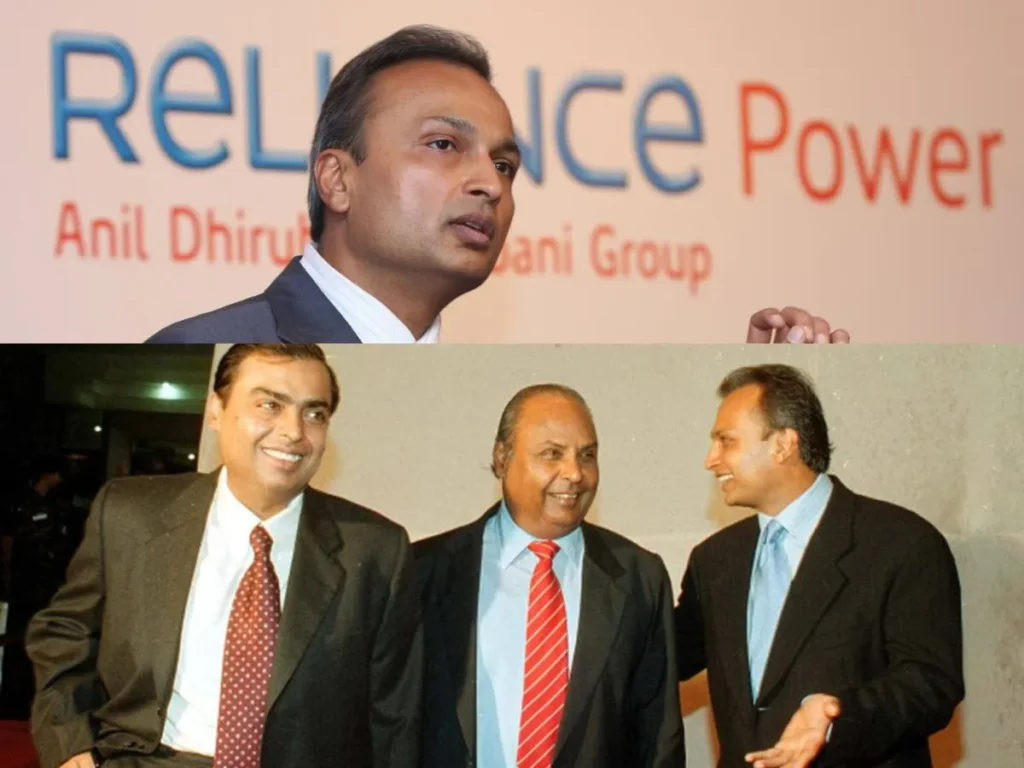Table of Contents
ToggleAnil Ambani's Reliance Power Resolves Debts: A Path to Recovery and Growth

Anil Ambani: An Introduction
Born on June 4, 1959, Anil Ambani is the younger son of the legendary industrialist Dhirubhai Ambani and Kokilaben Ambani. His elder brother, Mukesh Ambani, shares the spotlight as the chairman and largest shareholder of Reliance Industries Limited (RIL), one of India’s largest conglomerates.
The Ambani family’s journey into business began with Dhirubhai Ambani’s humble origins in Gujarat. From selling bhajias (Indian snacks) to running a textile trading company, Dhirubhai possessed an innate entrepreneurial spirit and an unwavering determination to succeed against all odds. In 1958, he founded Reliance Commercial Corporation, laying the foundation for what would become Reliance Industries Limited, a behemoth spanning diverse sectors such as petrochemicals, refining, telecommunications, and retail.
Anil Ambani and Mukesh Ambani grew up witnessing their father’s relentless pursuit of growth and expansion. Dhirubhai’s visionary leadership and innovative business strategies not only transformed Reliance into a global powerhouse but also inspired a generation of entrepreneurs in India. Under his guidance, Reliance emerged as a symbol of India’s economic resurgence and entrepreneurial prowess.
Following Dhirubhai’s passing in 2002, a significant restructuring took place within the Ambani family business. Mukesh Ambani took over the reins of Reliance Industries Limited, while Anil Ambani assumed control of the Reliance Group, encompassing diverse interests ranging from power generation and infrastructure to financial services and entertainment.
Despite the shared heritage and upbringing, Anil and Mukesh Ambani’s paths diverged as they navigated the complexities of business and personal ambitions. The ensuing years witnessed both collaboration and competition between the brothers, reflecting the intricate dynamics of family and business in India’s corporate landscape.
Anil Ambani’s journey has been marked by notable successes and challenges. His endeavors in telecommunications, power, and infrastructure have left an indelible mark on India’s economic landscape. However, Anil Ambani also faced setbacks, including legal battles, debt challenges, and corporate restructuring.
Throughout it all, Anil Ambani’s commitment to innovation, resilience, and adaptability remains evident. As he continues to navigate the ever-changing business environment, Anil Ambani draws inspiration from his family’s rich legacy while forging his own path towards growth, sustainability, and societal impact.
Debt Challenges of Reliance Power
Explore how Anil Ambani’s Reliance Power is tackling debt challenges, settling with major banks, and charting a course for resurgence. Learn about the strategic initiatives driving sustainable growth and investor confidence.
Anil Ambani, once a prominent figure in global wealth rankings, faced tumultuous times, but his recent endeavors signal a significant turnaround for his conglomerate, Reliance Power. Amidst challenges, Anil Ambani’s firm has taken decisive steps towards financial stability, settling debts with major banking institutions and forging a path towards resurgence.

Restoring Investor’s Confidence
In a notable development, Reliance Power, under Anil Ambani’s leadership, successfully resolved debts with three prominent banks – ICICI Bank, Axis Bank, and DBS Bank. This strategic move underscores the company’s commitment to addressing financial obligations and restoring investor confidence. Additionally, Reliance Infrastructure, the parent company, is actively engaged in clearing outstanding payments, including a substantial sum owed to JC Flowers Asset Reconstruction Company.
Anil Ambani’s resurgence has not gone unnoticed, drawing attention back to his ventures after a period of relative obscurity. Despite facing bankruptcy proceedings in 2020, Anil Ambani has navigated challenges and is now witnessing a remarkable resurgence. Reliance Power’s stock prices have surged by over 120% in the past year, reflecting renewed investor optimism and confidence in Ambani’s leadership.
Anil Ambani & The Metro Project
The positive momentum extends beyond Reliance Power, as Reliance Retail also experienced a significant uptick following the announcement of debt settlements with ICICI Bank. With a clear focus on financial restructuring, Anil Ambani aims to settle the remaining debt with JC Flowers Asset Reconstruction Company, signaling a steadfast commitment to debt resolution and operational efficiency.
Moreover, the recent approval by the state cabinet for the purchase of the Ghatkopar-Versova Mumbai Metro One represents another milestone for Anil Ambani’s Reliance Infrastructure Limited. This strategic move not only injects much-needed capital into the firm but also underscores its strategic importance within Mumbai’s infrastructure landscape.
Its A New Begining
Anil Ambani’s endeavors towards debt resolution and strategic investments position Reliance Power and its affiliated companies on a path towards sustainable growth and profitability. As Anil Ambani aims to achieve a debt-free status by the conclusion of the fiscal year, stakeholders anticipate a renewed era of prosperity and stability for the conglomerate under his stewardship.
Furthermore, Anil Ambani’s commitment to innovation and diversification is evident in his strategic initiatives beyond debt resolution. Reliance Power’s focus on renewable energy projects, coupled with Reliance Infrastructure’s involvement in critical infrastructure developments, underscores Ambani’s vision for sustainable growth and societal impact. By leveraging emerging technologies and fostering strategic partnerships, Ambani aims to position his conglomerate at the forefront of India’s evolving economic landscape. With a renewed emphasis on corporate governance and transparency, Anil Ambani seeks to instill confidence among stakeholders and drive long-term value creation for shareholders, employees, and the community at large.
